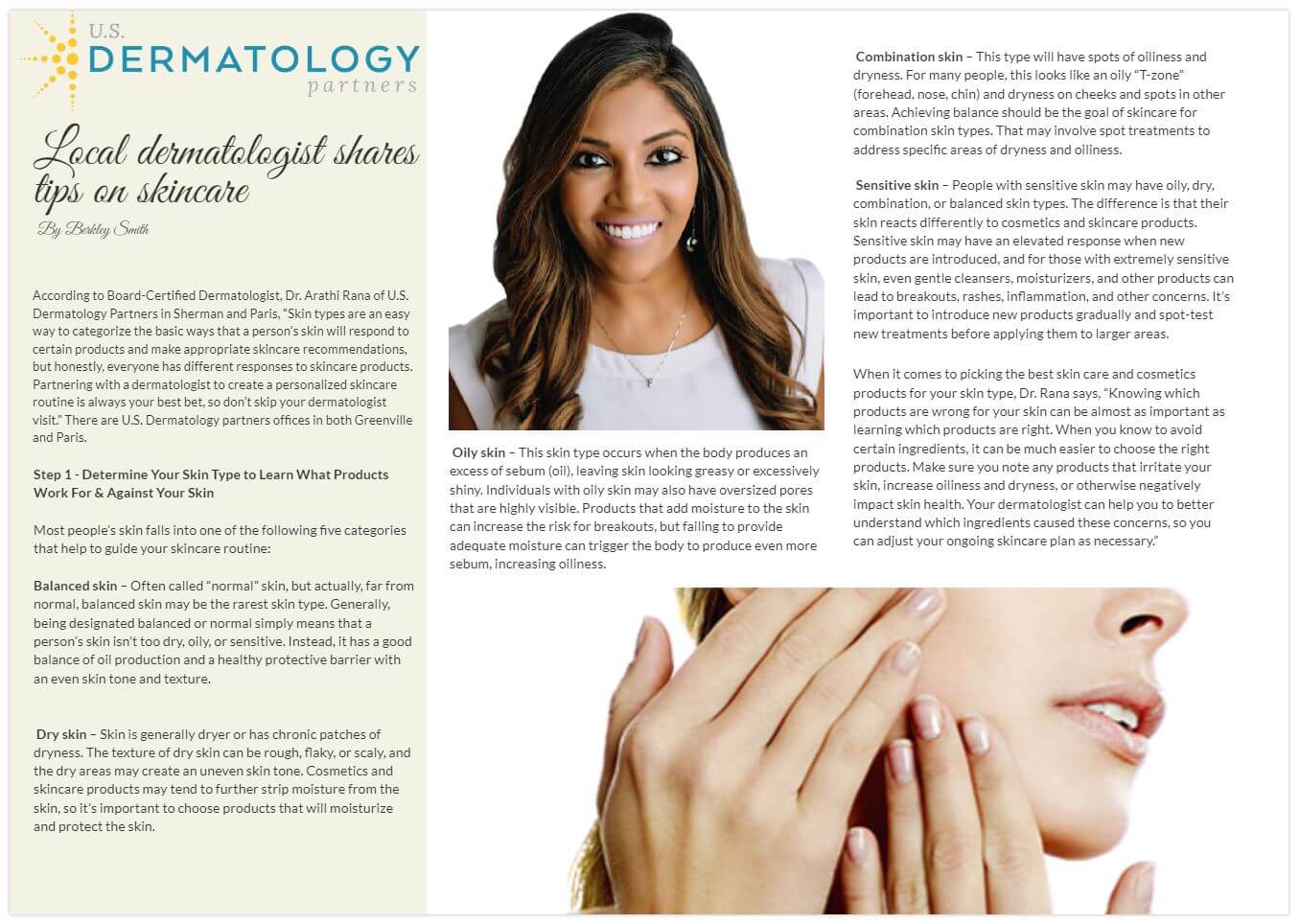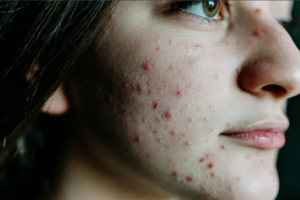This month’s magazine is just for women. We dive into fall fashion, skincare, and is Frotox the new Botox? Find out in the August issue of 30 East.
…
Local dermatologist shares tips on skincare
By Berkley Smith
According to Board-Certified Dermatologist, Dr. Arathi Rana of U.S. Dermatology Partners in Sherman and Paris, “Skin types are an easy way to categorize the basic ways that a person’s skin will respond to certain products and make appropriate skincare recommendations, but honestly, everyone has different responses to skincare products. Partnering with a dermatologist to create a personalized skincare routine is always your best bet, so don’t skip your dermatologist visit.”
There are U.S. Dermatology partners offices in both Greenville and Paris.
Step 1 – Determine Your Skin Type to Learn What Products Work For & Against Your Skin
Most people’s skin falls into one of the following five categories that help to guide your skincare routine:
- Balanced skin – Often called “normal” skin, but actually, far from normal, balanced skin may be the rarest skin type. Generally, being designated balanced or normal simply means that a person’s skin isn’t too dry, oily, or sensitive. Instead, it has a good balance of oil production and a healthy protective barrier with an even skin tone and texture.
- Dry skin – Skin is generally dryer or has chronic patches of dryness. The texture of dry skin can be rough, flaky, or scaly, and the dry areas may create an uneven skin tone. Cosmetics and skincare products may tend to further strip moisture from the skin, so it’s important to choose products that will moisturize and protect the skin.
- Oily skin – This skin type occurs when the body produces an excess of sebum (oil), leaving skin looking greasy or excessively shiny. Individuals with oily skin many also have oversized pores that are highly visible. Products that add moisture to the skin can increase the risk for breakouts, but failing to provide adequate moisture can trigger the body to produce even more sebum, increasing oiliness.
- Combination skin – This type will have spots of oiliness and dryness. For many people, this looks like an oily “T-zone” (forehead, nose, chin) and dryness on cheeks and spots in other areas. Achieving balance should be the goal of skincare for combination skin types. That may involve spot treatments to address specific areas of dryness and oiliness.
- Sensitive skin – People with sensitive skin may have oily, dry, combination, or balanced skin types. The difference is that their skin reacts differently to cosmetics and skincare products. Sensitive skin may have an elevated response when new products are introduced, and for those with extremely sensitive skin, even gentle cleansers, moisturizers, and other products can lead to breakouts, rashes, inflammation, and other concerns. It’simportant to introduce new products gradually and spot-test new treatments before applying them to larger areas.
When it comes to picking the best skin care and cosmetics products for your skin type, Dr. Rana says, “Knowing which products are wrong for your skin can be almost as important as learning which products are right. When you know to avoid certain ingredients, it can be much easier to choose the right products. Make sure you note any products that irritate your
skin, increase oiliness and dryness, or otherwise negatively impact skin health. Your dermatologist can help you to better understand which ingredients caused these concerns, so you
can adjust your ongoing skincare plan as necessary.”Step 2 – Understand & Treat Chronic Skin Health Issues […]
Source: eExtra News- I am Woman || August Issue 30 East Magazine
Read Full Article Here









